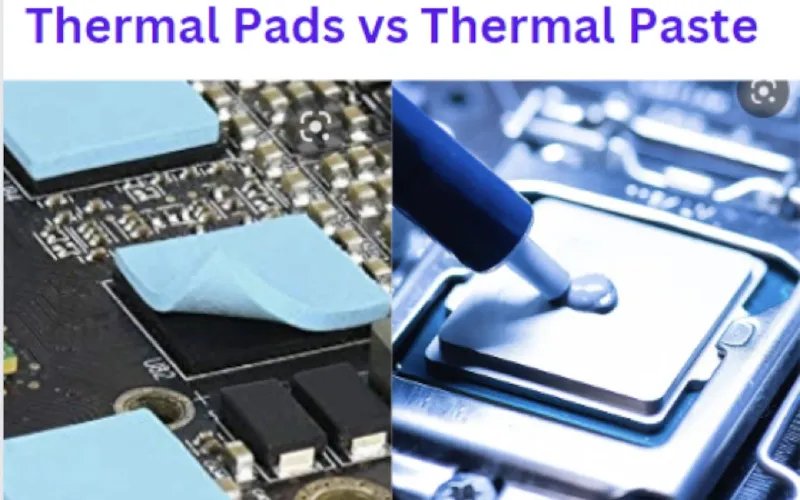Any computer owner knows that keeping their machine cool is important. Not only does it prolong the life of all the sensitive electronic components inside, but it can also help boost performance. But what’s the best way to keep things cool?
There are two main options for thermal management: thermal pads and thermal paste. Both have pros and cons, so choosing the right one for your needs is important. You could avoid an overheated, damaged, or unusable computer if you do.
This article will help you understand the difference between thermal pads and thermal paste to decide which is best for your needs.
What Are Thermal Pads?
Thermal pads are made of a conductive material, often metal, to transfer heat away from components and into a heat sink. Thermal pads are commonly used between a component and a heat sink or between a printed circuit board (PCB) and a chassis.
They are also used in various other applications where thermal management is important.
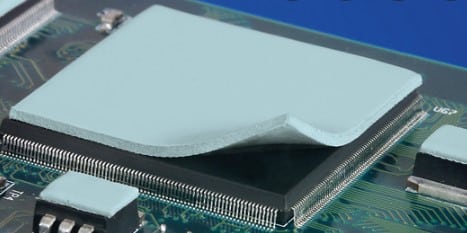
Thermal pads are available in various materials, sizes, and shapes. They can be custom-made or off-the-shelf. The choice of material, size, and shape will depend on the application and the specific requirements.
What Is Thermal Paste?
Thermal paste is a viscous substance that helps to conduct heat away from components and into the heatsink or cooling system. It often fills the gaps between a heatsink and the cooling component, such as a CPU or GPU.

Thermal paste is made from various materials, including ceramic, metal, and silicone. The most common type of thermal paste is made from metal oxides, such as zinc oxide or aluminum oxide.
Thermal paste is applied to the component’s surface using a brush, syringe, or other applicators. Once applied, the thermal paste will spread out and fill gaps between the component and the heatsink.
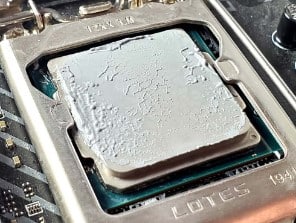
Thermal paste can dry out over time, so it is important to reapply it regularly. If the thermal paste dries out, it will no longer be effective at conducting heat away from the components.
Thermal paste is an important part of any computer cooling system and can help prolong the life of your components.
Difference Between Thermal Pads And Thermal Paste
If you want to improve your computer’s cooling performance, you may be wondering whether to use thermal pads or thermal paste. Both have advantages and disadvantages, so knowing their differences is important before deciding.
The following table summarizes the key differences between thermal pads and thermal paste:
1. Ingredients
Thermal pads are typically silicone, while the thermal paste is typically made of metal oxides. When comparing thermal conductivity, metal oxides typically win out. They can better fill the tiny gaps between partially flat surfaces.
Nevertheless, thermal pads are becoming more popular because they are easier to apply, especially for beginners. If you’re not confident applying thermal paste, thermal pads may be the better option.
2. Durability
Thermal pads are much more durable than thermal paste. They can last for years without needing to be replaced, whereas thermal paste will typically dry out and must be reapplied every 6 to 12 months.
This makes thermal pads a much more attractive option for long-term use. Thermal paste can be more effective than thermal pads in some cases. Thermal paste is a better conductor of heat than most thermal pads, so it can help to dissipate heat more effectively.
However, the thermal paste can be difficult to apply evenly and messy. Thermal pads are generally the better option for most people. They are easier to apply, last longer, and require less maintenance than thermal paste. Thermal pads are the way to go if you want a long-term solution.
3. Ease Of Application
Thermal pads are much easier to apply than thermal paste. You need to apply pressure to attach them to the surface, whereas thermal paste needs to be carefully applied with a syringe or other applicator.
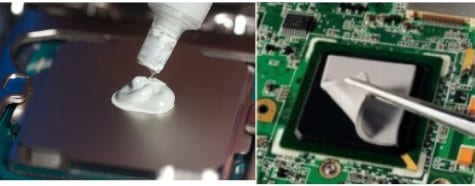
This can be a big advantage if you need to become more experienced in applying thermal paste, as it’s easy to make a mess and end up with too much or too little paste on your components. When it comes to thermal pads, you can peel and stick them on, making the process much simpler.
4. Heat Conductivity
Thermal pads are less effective at conducting heat than thermal paste. This is because they are made of materials with lower thermal conductivity, such as silicone or rubber.
On the other hand, thermal paste is made of materials with higher thermal conductivity, such as metal oxide or diamond. If you want to get the best heat conductivity, you should use thermal paste.
Related: Thermal Paste on CPU Pins
5. Cost
Thermal pads are generally more expensive than thermal paste. This is because they are made of more expensive materials and last longer. On the other hand, thermal paste is made of cheaper materials and needs to be replaced more often.
6. Leftover Thermal Paste
It can be reused if thermal paste is left over from a previous application. Thermal pads cannot be reused. Thermal paste can last for many years if it’s stored properly. Unused thermal paste should be stored in a cool, dry place.
It can degrade quickly if stored in a warm or humid environment. Thermal pads are made of materials that degrade over time. They should be replaced every few years to ensure optimal performance.
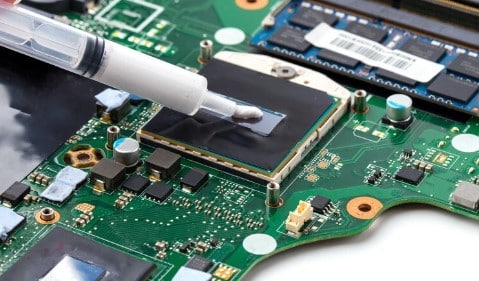
7. Cleaning
Thermal paste is much easier to clean up than thermal pads. If you spill thermal paste, it can be easily wiped away with a cloth. On the other hand, thermal pads can be difficult to remove once applied. You may need to use a solvent to remove them. You only need to apply a small amount of thermal paste to get the job done.
Too much thermal paste can impede heat transfer. Thermal pads are typically used when a large surface area is cooled. They are also useful for filling in gaps between the heat sink and the CPU.
8. Gap Filling
Thermal paste is better at filling small gaps than thermal pads. Thermal paste can flow into small gaps, whereas thermal pads cannot. This means thermal paste is better at creating good contact between the heatsink and the CPU.
When there is good contact between the heatsink and the CPU, heat can flow more easily from the CPU to the heatsink, and the CPU will stay cooler.
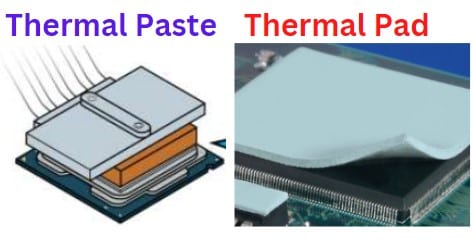
Thermal Pads vs Thermal Paste: Which Is Better?
Thermal paste and thermal pads are both excellent choices for heat transfer materials. However, each has advantages and disadvantages, making it better suited for different applications. When choosing between the two, it is important to consider the specific needs of your project to make the best decision.
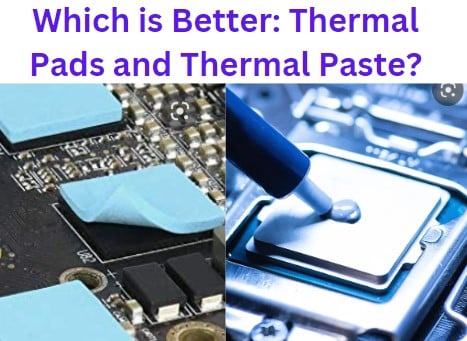
Both thermal paste and thermal pads are designed to fill the gap between a heat source and a heat sink. This gap is necessary to create a good connection and to allow heat to flow from the heat source to the heat sink.
Thermal paste is typically made from metals and thermal greases, while thermal pads are made from various materials, including rubber, silicone, and gel.
Thermal paste is often preferred for CPU cooling because it can be applied thinly. This thin layer provides good contact with the heat source and helps to fill any small air gaps. Thermal paste is also easy to apply and can be reapplied if necessary.
Frequently Asked Questions
Is It Right To Apply Thermal Paste On The Thermal Pads?
No, you should not apply thermal paste on the thermal pads. This can cause the thermal paste not to spread evenly and potentially damage your components. Following the manufacturer’s instructions when applying thermal paste is always best. If you are unsure, it is best to contact a professional.
How Long Does A Thermal Pad Last?
A thermal pad’s lifespan is typically around 10 years. However, a thermal pad can last much longer if properly handled. If a thermal pad is not properly taken care of, it may only last a few years. Several factors can affect a thermal pad’s lifespan, such as how often it is used and how it is stored.
Is It Ok To Stack Thermal Pads?
You can stack thermal pads, but it’s not recommended. Stacking thermal pads can cause uneven heat transfer and potentially damage sensitive components. If you stack thermal pads, use a thin layer of thermal paste or grease between the layers to help improve heat transfer.
Does Adding Thermal Pads Void Warranty?
Adding thermal pads to your electronics can sometimes void your warranty. Most manufacturers have a clause in their warranty stating that any product modification will void the warranty. If you add thermal pads to your electronic device and something goes wrong, the warranty will not cover you.
Sometimes, you may get a partial refund or exchange if an authorized dealer does the modification. However, it is still best to check with the manufacturer before modifying.
Should I Put A Thermal Pad On My SSD?
Whether or not you should put a thermal pad on your SSD depends on a few factors. If you’re using your computer in a hot environment or your SSD gets very hot, a thermal pad can help dissipate heat and keep your SSD cooler.
However, a thermal pad is likely unnecessary if you’re not having any overheating issues with your SSD. Ultimately, it’s up to you whether or not to use a thermal pad on your SSD.
Do Thermal Pads Melt?
The simple answer is yes. Thermal pads can melt. However, the melting point of a thermal pad will vary depending on the material it is made of. The most common material used in thermal pads is silicone, which has a melting point of around 300 degrees Celsius. Other materials, such as aluminum, have a much higher melting point and will not melt easily.
Thermal pads are used to transfer heat from one surface to another. They are commonly used between a heatsink and a CPU to help dissipate heat. If the thermal pad melts, it will no longer be able to transfer heat effectively and could potentially damage the components it is attached to.
If you use a thermal pad on your computer, it is important to monitor its temperature to ensure it stays cool and cool. If the pad gets too hot, you can try to cool it down using a fan or another cooling method. If the pad melts, you must replace it with a new one.
Do Thermal Pads Work On A CPU?
A thermal pad is an electrically insulating material that fills the space between a heat sink and a semiconductor device to improve thermal contact. A typical semiconductor device will have billions of tiny transistors, each generating heat during operation. If this heat is not dissipated quickly enough, the device will overheat and malfunction.
Thermal pads are made of materials with high thermal conductivity, such as copper, aluminum, or diamond. They are often used with a heatsink, which helps dissipate the heat over a larger area.
Thermal pads are typically used between a heat sink, CPU, GPU, or semiconductor device. They are also used between a power semiconductor device and a heat sink or cooling fin.
Thermal pads improve the thermal contact between the heat sink and the device, thus improving their heat transfer. This can help prevent overheating and extend the device’s life. If you use a CPU, GPU, or other semiconductor devices generating a lot of heat, you should consider using a thermal pad.
Does Thermal Paste Affect CPU Temp?
Yes, the thermal paste can affect CPU temperatures. If you have too much or too little thermal paste on your CPU, it can cause your temperature to be higher than it should be. If your CPU is overheating, it can lead to damage or even failure.
Applying the thermal paste properly is important to get the best results.
How Do I Know If My CPU Needs Thermal Paste?
If your computer is overheating, you likely need to reapply thermal paste. Turn off your computer and remove the CPU heatsink. Next, clean off the old thermal paste and apply a new layer. Finally, reattach the heatsink and turn on your computer.
Conclusion
You may wonder whether to use thermal paste or a thermal pad to improve your computer’s cooling performance. They offer different benefits, so it depends on your needs. If you want the best cooling performance and don’t mind extra work, thermal paste is the way to go.
Thermal pads are easier to apply and don’t require as much demanding work to get a perfect application, so they’re better for people who want a quick and easy solution. Whichever you choose, apply it correctly and monitor your temperatures to ensure that your system is running cool and stable.

